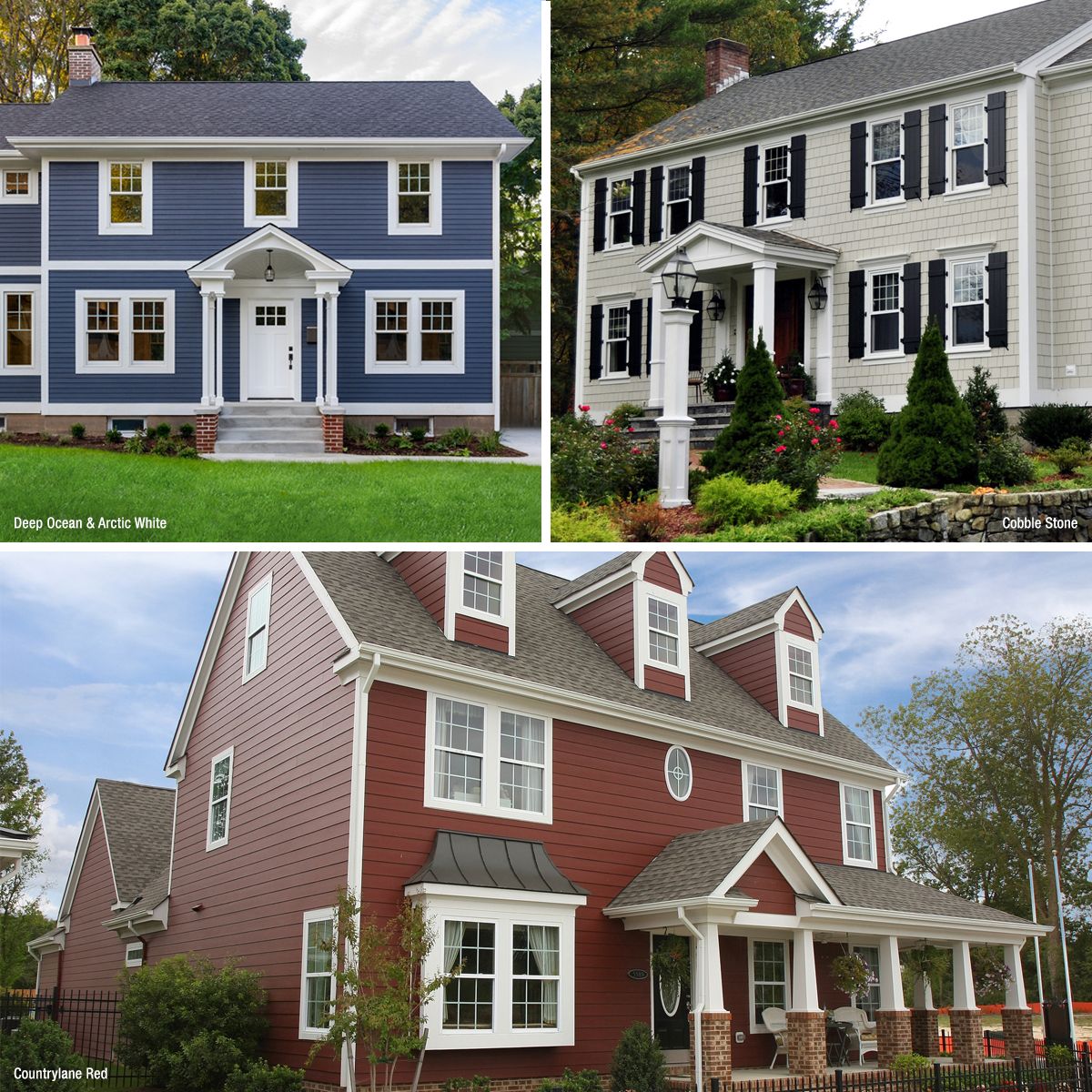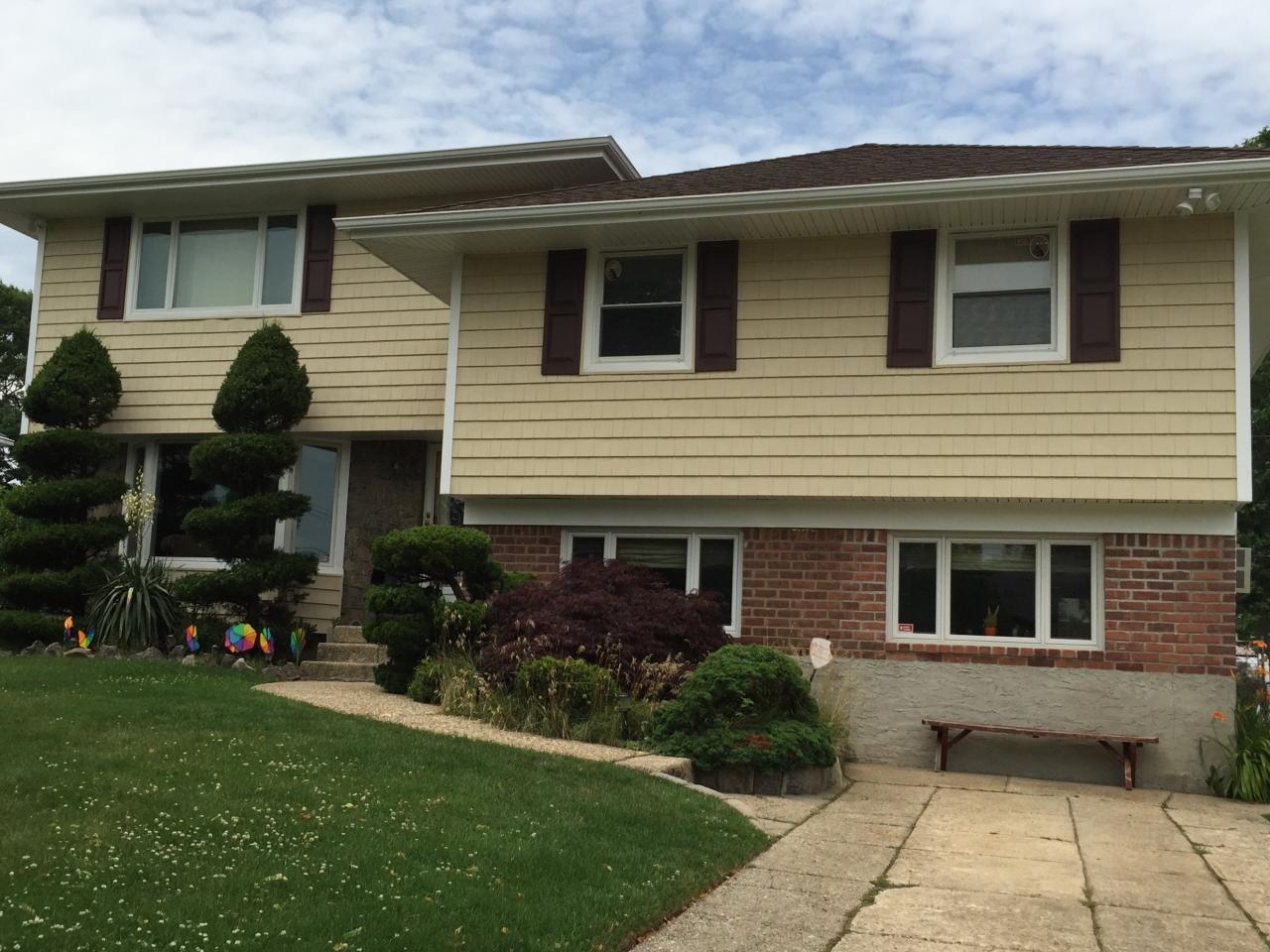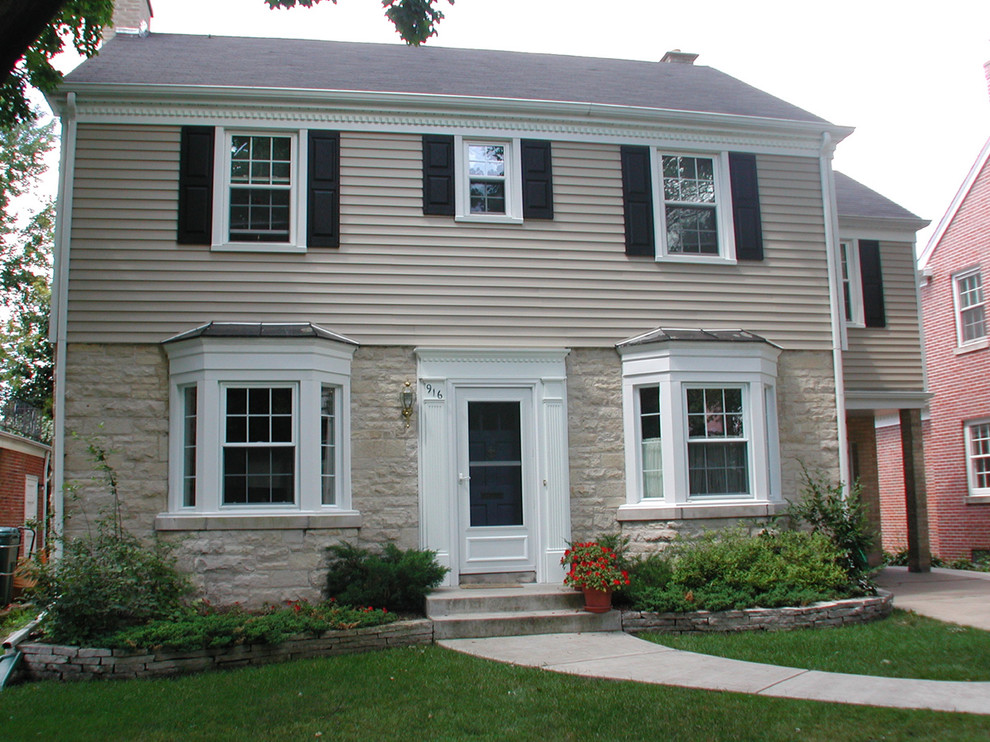Step into the world of colonial siding, where history meets modern design. Discover the essence of colonial siding and the materials that shape its unique character.
Unveil the secrets of colonial siding installation, maintenance tips, and design ideas that can transform any home.
Overview of Colonial Siding

Colonial siding is a type of exterior cladding that is commonly associated with traditional colonial-style architecture. It is characterized by its simple, symmetrical design and classic appeal.
Characteristics of Colonial Siding
- Rectangular shape: Colonial siding typically consists of long, rectangular panels that are installed horizontally on the exterior of a building.
- Uniformity: The panels are usually of the same size and shape, creating a uniform and cohesive look.
- Traditional colors: Colonial siding is often seen in classic colors such as white, gray, or neutral tones, reflecting the historical aesthetics of colonial homes.
- Wood grain texture: Many colonial siding options mimic the look of natural wood grain, adding a touch of warmth and authenticity to the design.
Materials Used in Colonial Siding
There are several materials commonly used in colonial siding, each offering unique benefits and aesthetics:
- Vinyl:Vinyl siding is a popular choice for colonial homes due to its durability, low maintenance, and wide range of color options.
- Fiber Cement:Fiber cement siding provides the look of wood without the maintenance, offering excellent durability and resistance to rot and insects.
- Wood:Traditional wood siding is a classic choice for colonial homes, adding a natural and timeless charm to the exterior.
- Composite:Composite siding combines various materials to create a durable and versatile option for colonial-style architecture.
Types of Colonial Siding

Colonial siding offers a variety of options to choose from, each with its own unique characteristics and benefits. Let's explore some of the most popular types of colonial siding available in the market.
Wood Siding
Wood siding is a classic choice for colonial homes, offering a traditional and timeless look. It can be made from various types of wood, such as cedar or pine, and is known for its natural beauty. However, wood siding requires regular maintenance, including painting or staining, to protect it from moisture and rot.
Vinyl Siding
Vinyl siding is a popular option for homeowners looking for a low-maintenance and affordable solution. It comes in a wide range of colors and styles, mimicking the look of wood or other materials. While vinyl siding is easy to clean and durable, it may not offer the same authenticity as real wood siding.
Fiber Cement Siding
Fiber cement siding is a versatile option that combines the look of wood with the durability of cement. It is resistant to rot, insects, and fire, making it a practical choice for colonial homes. Fiber cement siding is available in various textures and finishes, allowing homeowners to achieve the desired aesthetic.
Brick Siding
Brick siding is a classic choice for colonial-style homes, providing a timeless and elegant look. It offers excellent durability and insulation properties, helping to regulate indoor temperatures. While brick siding is more expensive than other options, it can last for decades with minimal maintenance.
Stone Veneer Siding
Stone veneer siding is a popular choice for adding a touch of luxury to colonial homes. It mimics the look of natural stone but is lighter and more affordable. Stone veneer siding is available in a variety of colors and styles, allowing homeowners to create a custom look for their home.These are just a few examples of the types of colonial siding available, each offering unique benefits and aesthetics to enhance the curb appeal of your home.
Installation Process

Installing colonial siding requires careful planning and attention to detail to ensure a successful outcome. Below, we will detail the step-by-step process of installing colonial siding, discuss important considerations before beginning the installation, and share tips for a smooth installation experience.
Step-by-Step Installation Process
- Prepare the Surface: Ensure the surface where the colonial siding will be installed is clean, level, and free of any debris or obstacles.
- Measure and Cut: Take accurate measurements of the area to determine the amount of siding needed. Cut the siding panels to fit using a saw.
- Install Corner Posts: Begin by installing corner posts to provide a starting point for the siding panels.
- Start Installing Siding Panels: Attach the first siding panel at the bottom of the wall, making sure it is level. Continue installing panels, ensuring they overlap correctly.
- Trim and Finish: Trim any excess siding at the ends and around windows and doors. Add finishing touches like trim pieces for a polished look.
Important Considerations
- Weather Conditions: Avoid installing colonial siding during extreme weather conditions like rain or high winds.
- Proper Tools: Make sure you have the necessary tools for the installation, including a saw, level, hammer, and nails.
- Siding Material: Choose a high-quality colonial siding material that is durable and suited for your climate.
Tips for Successful Installation
- Follow Manufacturer Instructions: Always refer to the manufacturer's instructions for specific installation guidelines.
- Work Methodically: Take your time and work methodically to ensure each siding panel is installed correctly.
- Seek Professional Help if Needed: If you are unsure about any step of the installation process, don't hesitate to seek help from a professional.
Maintenance and Care
Proper maintenance and care are essential for ensuring the longevity and appearance of colonial siding. By following some best practices, you can keep your siding in top condition for years to come.
Regular Cleaning
- Regularly clean your colonial siding with a mild detergent and water to remove dirt, dust, and grime buildup.
- Use a soft brush or cloth to scrub gently and avoid causing any damage to the siding surface.
- Rinse the siding thoroughly with clean water to remove any soap residue.
Inspecting for Damage
- Regularly inspect your colonial siding for any signs of damage, such as cracks, chips, or warping.
- Address any issues promptly to prevent further damage and maintain the integrity of the siding.
- Consider hiring a professional for a thorough inspection at least once a year to catch any potential problems early.
Preventing Mold and Mildew
- Prevent mold and mildew growth on your colonial siding by keeping it clean and dry.
- Ensure proper ventilation around the siding to prevent moisture buildup, which can lead to mold growth.
- If you notice any mold or mildew, use a solution of water and bleach to clean the affected areas carefully.
Painting and Sealing
- Regularly inspect the paint and sealant on your colonial siding and touch up any areas that show signs of wear or peeling.
- Repainting and resealing your siding every few years can help protect it from the elements and maintain its appearance.
- Choose high-quality paint and sealant products to ensure long-lasting protection for your siding.
Colonial Siding Design Ideas
When it comes to incorporating colonial siding into your home's exterior, there are numerous design ideas that can enhance the overall look and feel of your property. Colonial siding can bring a classic and timeless appeal to any home, making it a popular choice among homeowners looking to elevate their curb appeal.
Here, we will explore some innovative design ideas and provide tips for selecting the right colonial siding design for different architectural styles.
Enhancing Curb Appeal
Colonial siding can significantly boost the curb appeal of your home by adding sophistication and charm to the exterior. One popular design idea is to opt for a traditional white colonial siding paired with black shutters for a classic and elegant look.
This combination creates a striking contrast that instantly catches the eye of passersby.
Additionally, incorporating decorative trim work and intricate details such as dentil molding or raised panels can further enhance the overall aesthetic appeal of your home. These design elements add depth and character to the façade, creating a visually appealing exterior that exudes elegance and style.
Selecting the Right Design for Different Architectural Styles
When selecting the right colonial siding design for your home, it is essential to consider the architectural style of your property. For example, if you have a colonial-style home, opting for clapboard or Dutch lap siding can complement the traditional look of the house.
On the other hand, if you have a more modern or contemporary home, vertical board and batten siding can provide a unique and stylish contrast, creating a visually appealing blend of old and new. Mixing and matching different siding styles can also add visual interest and dimension to your home's exterior.
Conclusion
As we conclude our journey through colonial siding, remember that this versatile siding option not only adds charm but also increases the value of your property. Dive into the world of colonial siding and watch your home transform into a timeless masterpiece.
FAQs
What defines colonial siding?
Colonial siding is characterized by its simple, symmetrical design and often features clapboard or shingle materials.
How do I maintain colonial siding?
To maintain colonial siding, regularly clean it, inspect for damage, and repaint or seal as needed to protect it from the elements.
What are common issues with colonial siding?
Issues like rot, pests, or warping can occur with colonial siding. Prompt repairs and preventive maintenance can help address these issues effectively.


